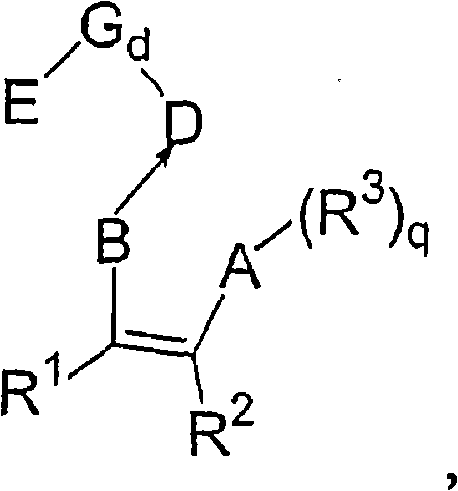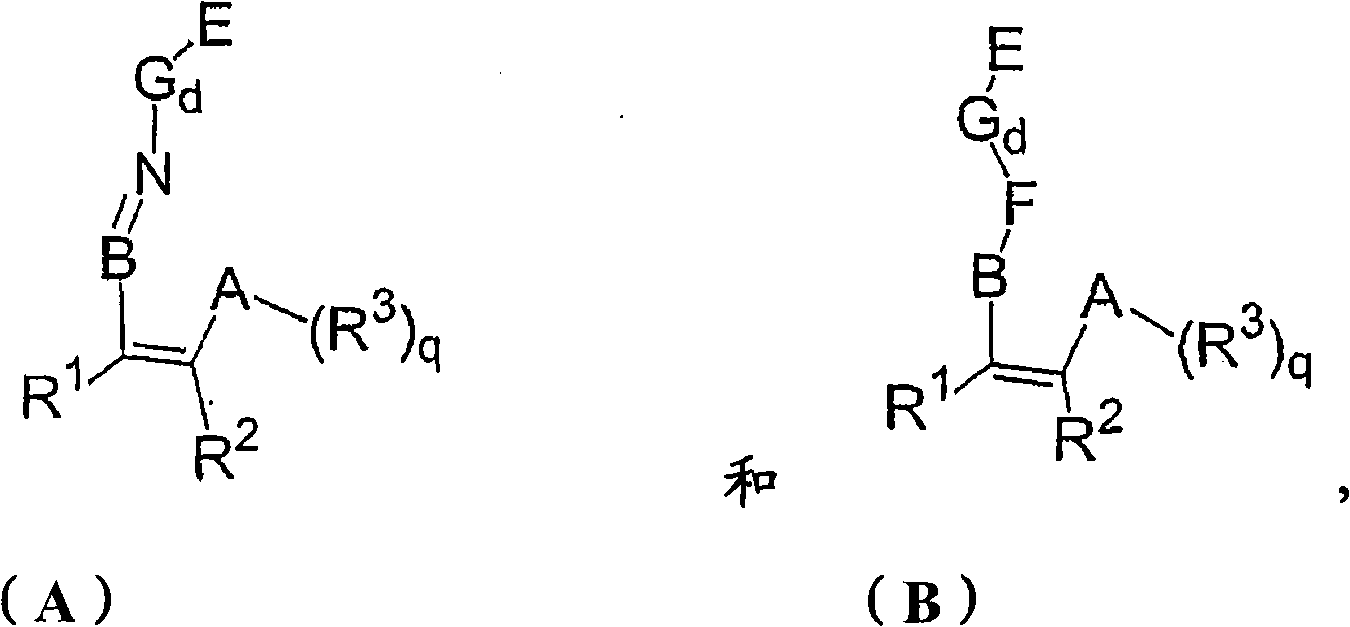Loaded non-metallocene catalyst and preparation method and application thereof
A kind of non-metallocene, non-metallocene ligand technology
- Summary
- Abstract
- Description
- Claims
- Application Information
AI Technical Summary
Problems solved by technology
Method used
Image
Examples
preparation example Construction
[0083] According to the present invention, it relates to a preparation method of a supported non-metallocene catalyst, comprising the following steps: dissolving a magnesium compound and a non-metallocene ligand in a solvent to obtain a magnesium compound solution; The step of mixing the porous carrier with the magnesium compound solution to obtain a mixed slurry; adding a precipitant to the mixed slurry to obtain a composite carrier; and treating the composite carrier with a chemical treatment agent selected from group IVB metal compounds, The step of obtaining the supported non-metallocene catalyst.
[0084] The steps for obtaining the magnesium compound solution are specifically described below.
[0085] Specifically, the magnesium compound (solid) and the non-metallocene ligand are dissolved in an appropriate solvent (ie, a solvent for dissolving the magnesium compound), thereby obtaining the magnesium compound solution.
[0086] As the solvent, for example, C 6-12 Aroma...
Embodiment 1
[0306] The magnesium compound adopts anhydrous magnesium chloride, the solvent for dissolving the magnesium compound and the non-metallocene ligand adopts tetrahydrofuran, and the chemical treatment agent adopts titanium tetrachloride. The porous carrier adopts silicon dioxide, that is, silica gel, the model is ES757 of Ineos Company, and the non-metallocene ligand adopts the structure of compound of.
[0307] Firstly, the silica gel was continuously fired at 600° C. under nitrogen atmosphere for 4 hours to thermally activate it.
[0308] Weigh 5g of anhydrous magnesium chloride and non-metallocene ligands, add tetrahydrofuran solvent and dissolve completely at room temperature, then add heat-activated silica gel, stir for 2 hours, add precipitant hexane to make it precipitate, filter, wash 2 times, The amount of the precipitating agent added each time is the same as that added before, and it is evenly heated to 60° C. and dried under vacuum to obtain a composite carrier.
...
Embodiment 1-1
[0313] Basically the same as Example 1, but with the following changes:
[0314] The porous carrier was changed to Grace's 955, and it was continuously calcined at 400° C. for 8 hours under a nitrogen atmosphere to be thermally activated.
[0315] Non-metallocene ligands use The solvent for dissolving magnesium compounds and non-metallocene ligands was changed to toluene, the precipitating agent was changed to cyclohexane, and the chemical treatment agent was changed to zirconium tetrachloride (ZrCl 4 ).
[0316] Wherein the ratio is, the ratio of magnesium compound to toluene is 1mol: 150ml; the molar ratio of magnesium compound to non-metallocene ligand is 1: 0.15; the mass ratio of magnesium compound to porous carrier is 1: 4; the precipitation agent and dissolved magnesium compound The volume ratio of the solvent to the non-metallocene complex is 1:2; the molar ratio of the magnesium compound to the chemical treatment agent is 1:0.20.
[0317] Supported non-metallocene...
PUM
 Login to View More
Login to View More Abstract
Description
Claims
Application Information
 Login to View More
Login to View More - R&D
- Intellectual Property
- Life Sciences
- Materials
- Tech Scout
- Unparalleled Data Quality
- Higher Quality Content
- 60% Fewer Hallucinations
Browse by: Latest US Patents, China's latest patents, Technical Efficacy Thesaurus, Application Domain, Technology Topic, Popular Technical Reports.
© 2025 PatSnap. All rights reserved.Legal|Privacy policy|Modern Slavery Act Transparency Statement|Sitemap|About US| Contact US: help@patsnap.com



